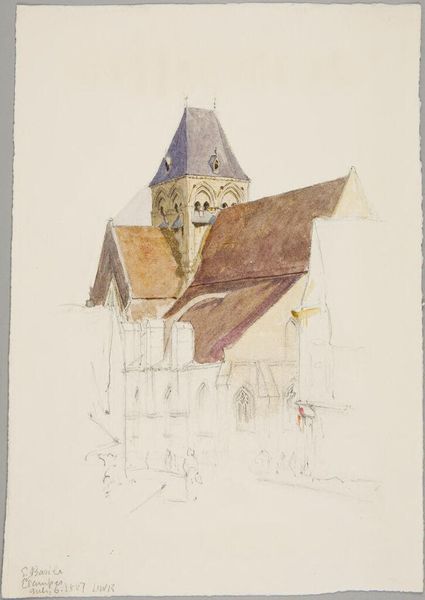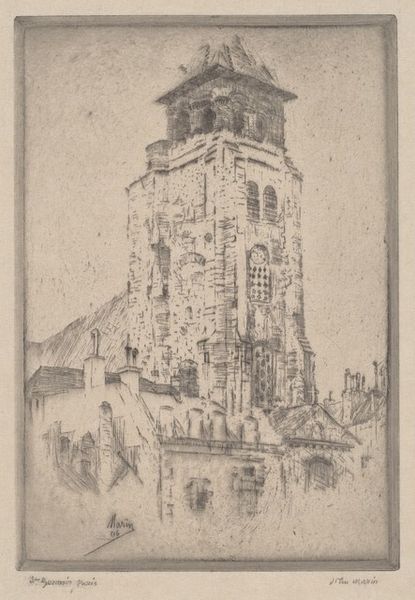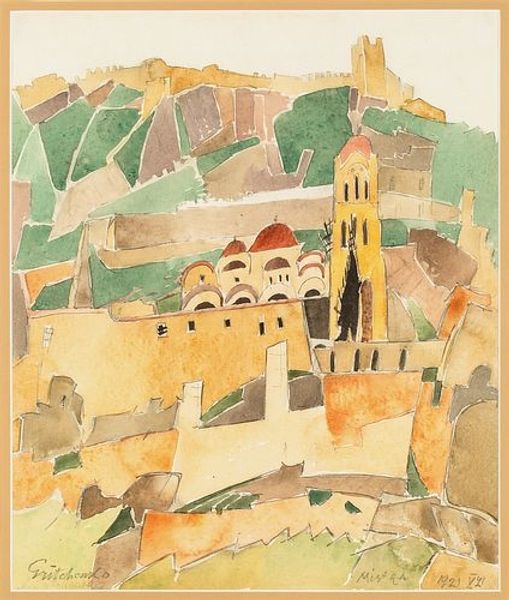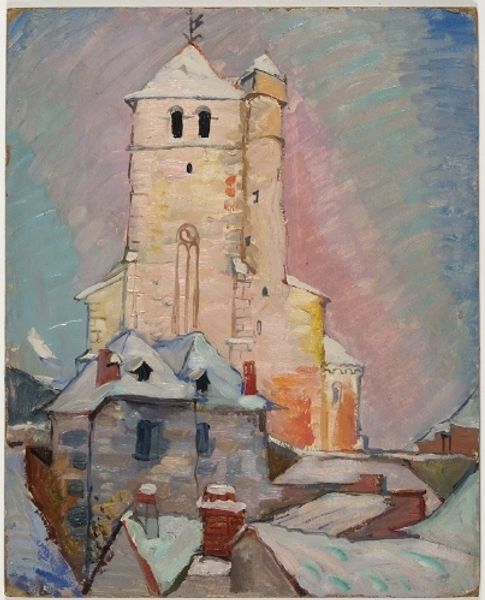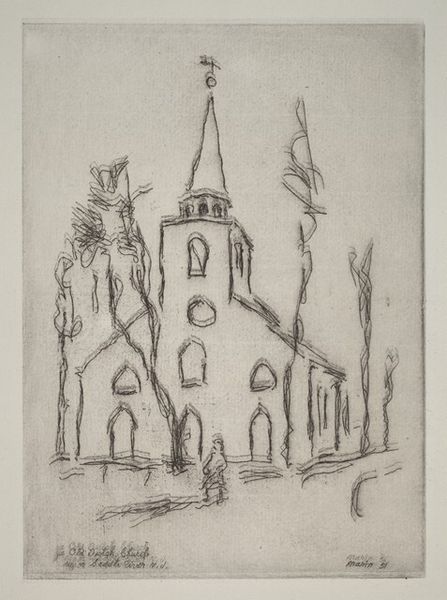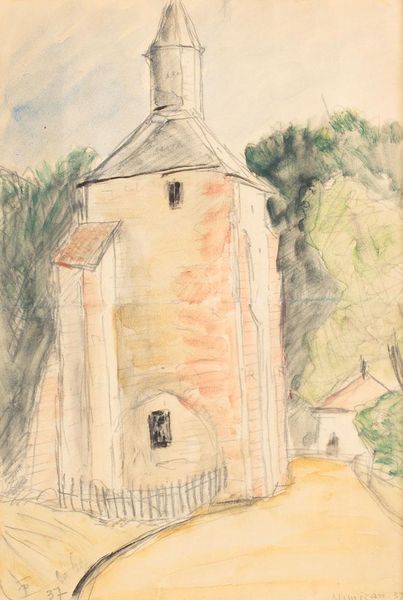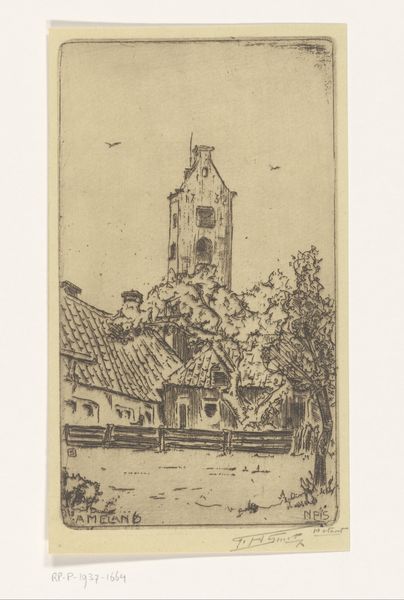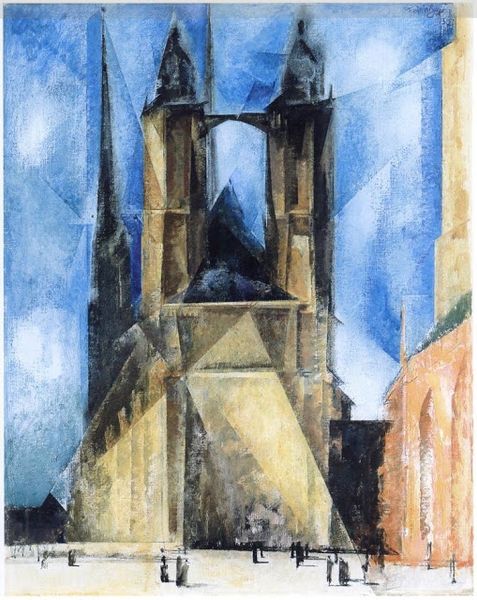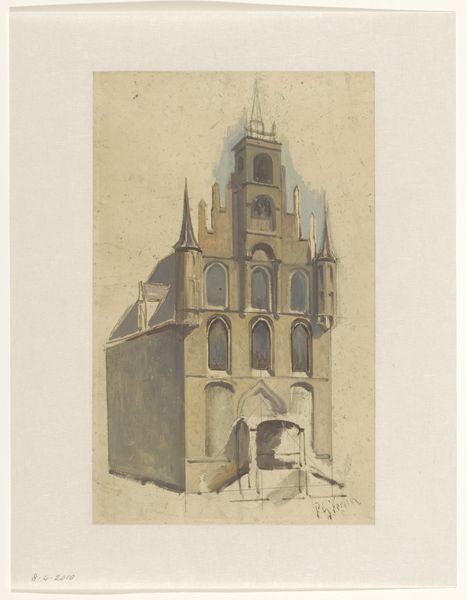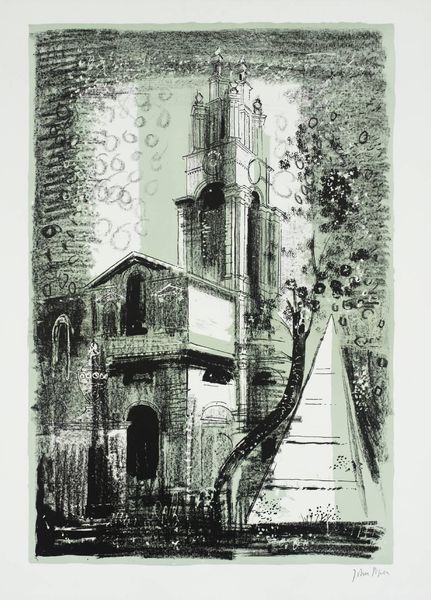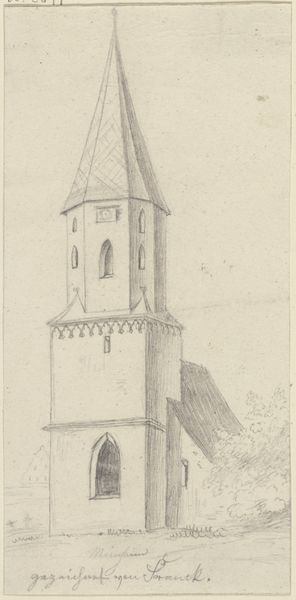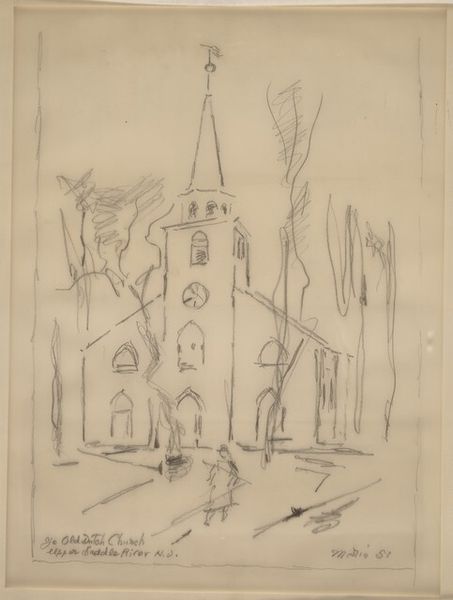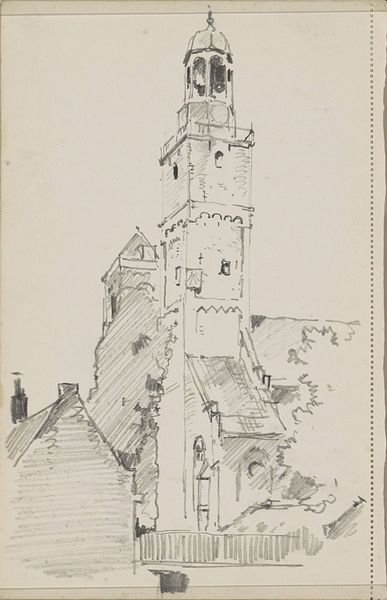
New London Harbor, from the Lighthouses series (N119) issued by Duke Sons & Co. to promote Honest Long Cut Tobacco 1889
0:00
0:00
drawing, print, etching
#
drawing
#
pictorialism
# print
#
etching
#
landscape
#
cityscape
#
watercolor
Dimensions: Sheet (Irregular): 4 1/16 × 2 1/2 in. (10.3 × 6.4 cm)
Copyright: Public Domain
Editor: This print, "New London Harbor" from 1889, created by W. Duke, Sons & Co. to promote their tobacco, features a stately lighthouse. The style and colors feel a bit muted and nostalgic, which seems strange given its purpose as an advertisement. I'm wondering, what draws your eye in this piece? Curator: What I find interesting is precisely that tension. This is clearly a mass-produced advertisement, yet it employs techniques – etching and watercolor – and even evokes the *style* of high art, pictorialism. We have to ask: what kind of value does that add to this piece as a commodity? Consider the means of production; this image had to be reproduced hundreds, perhaps thousands, of times. How did that process influence its aesthetic qualities? Editor: So, you're saying that even something mass-produced like this is influenced by artistic choices of its time and how it relates to craft? Curator: Precisely! The company isn't just selling tobacco; they are selling an image of respectability, perhaps even a sense of history or place connected to New London. This elevation of a commodity to "art" speaks volumes about how consumerism and art became entangled during that era. What labour went into creating these prints, how much did the company care? Who was consuming this print, and this tobacco, and why? Editor: That’s fascinating. I was so focused on the image itself, I didn’t really consider the commercial aspects or the societal implications of blending art and advertising. It's amazing to consider the social reach of these everyday commodities and advertisements. Curator: Indeed. By looking at the materials and means of production, we reveal a far richer story about culture and consumption than just what the image depicts at face value.
Comments
No comments
Be the first to comment and join the conversation on the ultimate creative platform.
